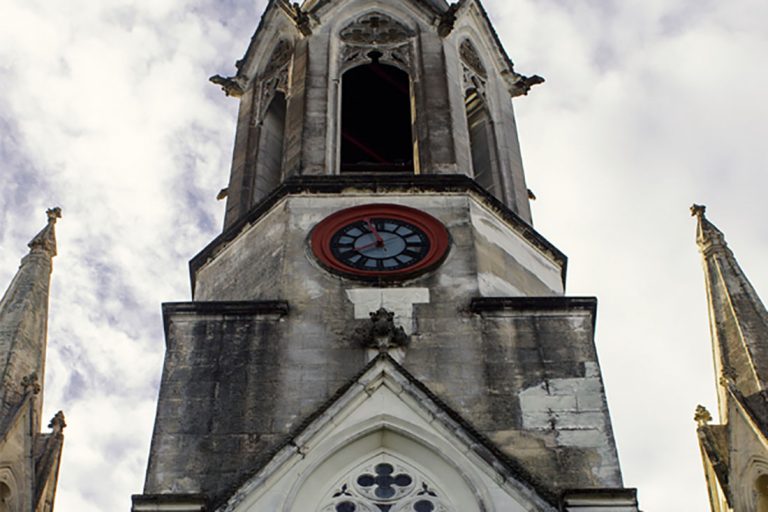The architectural complex that makes up the current Youth Square, formerly San Francisco Square, has buildings of great value that keep several centuries of history, as often happens in the city of waterpots.
It undergoes several transformations in its structure, at first square, and in the twentieth century the rectangular shape that still conserves. The most striking construction for its style, its monumentality and its significance for the religious tradition of Camaguey is the Sacred Heart of Jesus Church.
The church is closely related to the Institute of the Pious Schools and a personality that was decisive within the Catholic religion in the city, Dolores Betancourt Agramonte.
With the arrival of the Piarist Fathers in Camagüey on May 8th, 1857, negotiations began with the authorities to found the school. It was decided to use the premises that belonged to the convent of San Francisco and, with Father Agustín Botey in charge of the work, the work began on August 11th, 1857. Inaugurated on May 3rd, 1858, become only one place with the San Francisco church demolished in the second half of the 20th century.
Miss Lola Betancourt
Miss Dolores Betancourt Agramonte, daughter of Tomás Pío Betancourt, the first historian of the city of Camagüey, was characterized by being at the service of the Church and the poor classes. Her large donations to charity throughout her life are countless.
In close relationship with the San Francisco Church and the Piarist Fathers, on June 16th, 1906, she donated a ciborium, embossed, adorned with six enamels and fine stones, to be used for Catholic worship in church. Through the same channel, $ 200.00 is received for the new banks of the church.
On July 26th, 1909, Doña Dolores expressed her desire to build a new Church for the Pious Schools, a proposition that was very well received.
The construction process
On August 16th, 1910, when the Community and the Archbishop of Santiago de Cuba agreed, the new Church was built, a gift from the distinguished and generous lady. To carry out such an important building, the Catalan Construction Company was counted on, with Jaime Cruanyas as the main executor. The opening of the trenches for the foundations of the church takes place on June 19th, 1912 and on July 15th of the same year, the first stone of the Church is blessed.
A constructive process that would last around 8 years was finished on May 21st, 1920 with the delivery of the church keys.
It would not be until June 26th, 1920 that the Holy Sacrifice of the Mass was performed by Monsignor Manuel Ruíz, Bishop of Pinar del Río, who solemnly blessed the Church. The Blessed Sacrament was transferred in procession from the old to the new church.
This is how this neo-Gothic church was founded in the heart of the city of Camagüey, with a rectangular plan made up of three naves and finished in a polygonal apse. The main façade is made up of a portal with three pointed arches, with tympanums decorated with natural elements, and three octagonal towers topped by pyramidal pinnacles.
The central tower, where the clock is located, has a greater height and is projected on the portal, protruding from it. The main access is located on its axis, through a flared arch with archivolts of plant motifs, and above it the choir window.
The use of gargoyles is very distinctive, decorating the drainage systems in their corners. The interior is characterized by the filtering of light produced by the polychrome stained glass windows with religious images, imported from Germany, as well as by the ribbed vaults, the neo-Gothic white marble altarpieces, and the arcade and pointed openings.
In this way the Piarist Fathers and the immense kind spirit Dolores Betancourt Agramonte gave one of its most important churches to the city.
Miss Lola, on July 1st, 1914, donated $ 2000.00 Spanish gold to the College, so that Masses would be celebrated in her name after her death; This obligation was accepted by the Community and constitutes a tradition to this day. Every Monday mass is held in honor of Dolores Betancourt Agramonte and her father, for the rest of their souls, and for her philanthropic work.
____________________
Bibliography:
- García Santana, A. (2008). Las primeras villas de Cuba. Ediciones Polymita S.A. Ciudad de Guatemala, Guatemala
- Diario realizado por los Padres Escolapios






